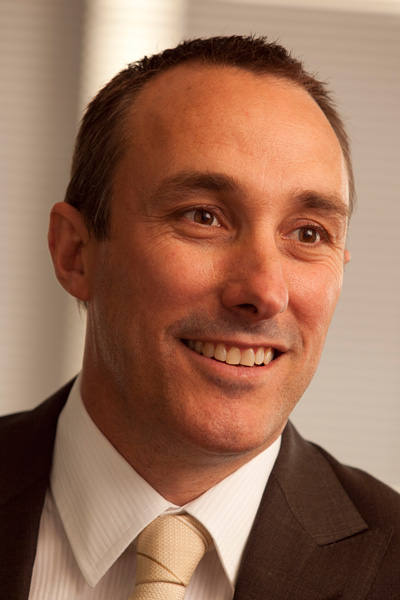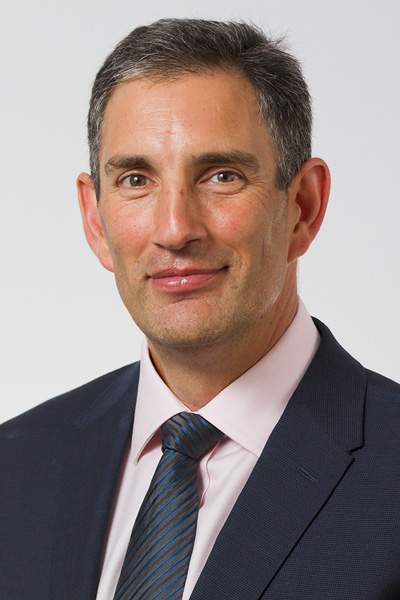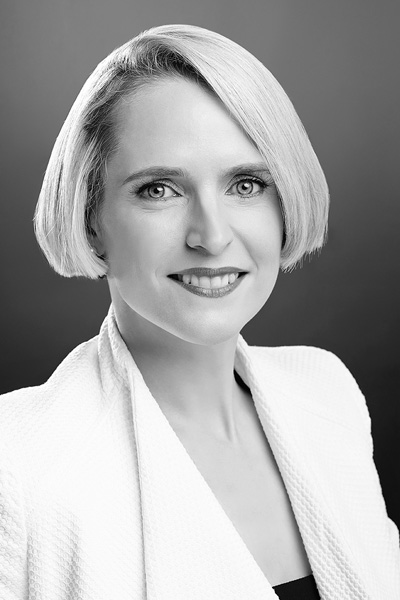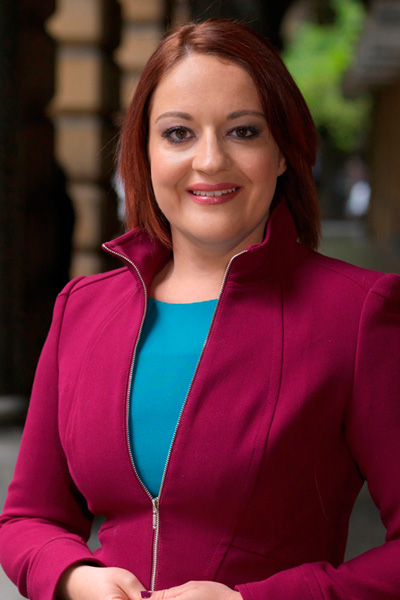The Financial Services Council (FSC) held its annual Life Insurance Conference in April, attended by the who’s who of Australia’s life insurance industry, and hosted by FSC CEO, John Brogden. Among the issues tackled at the Conference were the rise of direct insurance, the regulatory landscape, and the long-term sustainability of the industry. Ahead of these sessions, Mr Brogden joined with members of the advice community, and life insurer TAL, to debate these and other issues in more detail…

John Brogden
CEO, Financial Services Council

Brett Clark
CEO, TAL Life

Richard Klipin
CEO, Millennium 3

Catherine Robson
Principal, Affinity Private

Dominque Bergel-Grant
Director, Leapfrog Financial
FoFA amendments
The panel began by discussing the Government’s proposed Future of Financial Advice (FoFA) legislation amendments, which have been the subject of widespread media attention. Panellists generally felt the messages being delivered via mainstream media about the FoFA amendments have been ill-informed and detrimental to the advice industry.
Richard Klipin, CEO of licensee Millennium3, voiced his concerns about a largely technical debate becoming mainstream news. “FoFA is really a trade conversation, but as a result of an exceptionally well-orchestrated campaign it has drifted from the trade press to the front pages of the business section. It feels like we’ve gone back to the start of the FoFA process, whether intentionally or not. My concern is that it’s back on the front page and it’s still unresolved,” Klipin said.
Adviser and 2013 winner of the AFA Female Excellence in Advice Award, sponsored by TAL, Catherine Robson, offered a similar view. “The great benefit of FoFA as a whole project is about increasing confidence in the industry,” Robson said. “One of the things I liked about the post-FoFA discussions with clients was hearing them say: ‘Hasn’t the Government done something about improving the quality of financial advice?’
 “With all of the most recent commentary, I’m hoping consumers still have that feeling that something’s been done to give them confidence in the financial advice process. I think consumers are sick of hearing about what are quite technical changes that they don’t really understand. Given that it’s not nearly as important in a consumer’s life as it is to us as an industry, I think the messages can be quite confusing for clients.”
“With all of the most recent commentary, I’m hoping consumers still have that feeling that something’s been done to give them confidence in the financial advice process. I think consumers are sick of hearing about what are quite technical changes that they don’t really understand. Given that it’s not nearly as important in a consumer’s life as it is to us as an industry, I think the messages can be quite confusing for clients.”
“When I think about where we are today the biggest disappointment for me is that we’re still having the conversation,” said TAL Life CEO, Brett Clark, describing the current environment as a bit like deja vu.
“It’s disappointing and frustrating for every stakeholder in the process – adviser, licensee, industry body, life insurer, wealth manager, whoever you are – to be having this discussion and not moving forward on a more proactive agenda.
“If an adviser is not acting in the best interests of their client, no matter what any regulator says, they’re not going to survive. So, for us to be spending an enormous amount of time talking about, for example, ‘section g’ in part of a regulation around the best interests duty, it feels to me like we’ve let ourselves down and allowed the agenda be taken over by some parties.
People are getting the message that financial advisers don’t have to act in their best interests. That’s incredibly frustrating.
“We’re not providing the clarity and confidence for consumers, and they’re the most important stakeholder in all of this. The process we’ve gone through over the last three years has arguably damaged the trust and confidence in the industry. I think we need to reflect on that,” Clark said.
“Recent comments have been taken well and truly out of context,” said Dominique Bergel-Grant, who operates a highly successful financial advice business on Sydney’s North Shore.
“I recently had a new client couple come to my office, and as I was presenting the Statement of Advice to them they said to me: ‘Do you have to act in our best interests, because we’ve been hearing in the media that you don’t.’ This was from a young couple in their late thirties with a young child. People like my clients are getting the message, through the media, that financial advisers don’t have to act in their best interests. That’s incredibly frustrating.”
Bergel-Grant pointed out that, in the case of these particular clients, she could educate them on her process and reassure them that she would act in their best interests. But for the vast majority of Australians who do not currently have an advice relationship, the perception that already exists of financial advisers being intimidating and difficult to approach is being further compounded by the current media bias.
FSC CEO, John Brogden, also expressed his disappointment that the industry had seemingly taken a backwards step in relation to the FoFA debate.
“The debate has been hijacked. Media commentators have been absolutely wrong to suggest the best interests duty is being abolished. To have people walk into advisers’ businesses and say that is just extraordinary. But, perception is reality, and I’m disappointed that this is the case,” said Mr Brogden.
Despite the potential reputational impacts of the negative media commentary, the consensus view of the panel was that the Government should proceed with the amendments.
This view was best summed-up by Brogden: “When Chris Bowen, as the Minister for Financial Services, announced FoFA in April 2010, he said there were two objectives. The first one was to reduce the levels of conflict in the provision of financial advice, and the second was to increase the accessibility of advice. I think this legislation, even as amended, achieves the first one, but currently FoFA does not achieve the second.
“For existing advice models, the changes may not make that much of a difference. The 20% of people that get advice now – their world won’t change much. But that’s not good enough. We need a system that allows for another 30% of Australians to get advice,” continued Brogden.
“We need millions more Australians to get advice, not thousands. Why? People are living longer, and as a consequence, we’re alive a long time in retirement. We need people to be privately funded through that period of their lives as much as possible. We cannot be comfortable with 70% of people taking the default superannuation option. So, more Australians need advice, but the reality is they’re not all going to pay $2,500 for it, and a lot of them need more than just a three minute call centre conversation. Nothing in the existing FoFA legislation provides the capacity and the surety to advisers to get out there and provide millions more Australians with advice,” Brogden concluded.
Meanwhile, those at the coal-face said they were keen to simply get on with the business of servicing clients…
“I think the better advice practices will continue to operate at that higher standard, regardless of whatever it is that the Government chooses to unwind,” said Bergel-Grant. “I started my business knowing that FoFA was coming in, so I set up processes to support opt-in and Fee Disclosure Statements (FDS) from the beginning. In my model, clients either have an ongoing relationship with me, and therefore pay an ongoing fee for that service, or they get initial strategic advice which they then implement themselves, and simply pay an hourly fee for the time that I spend with them.”
 Robson agreed: “For us, FoFA, in terms of implemental actions, was a bit of a non-event. We run a strictly fee-for-advice practice. We don’t accept commission from any source, we had no grandfathering issues, and we already review our agreements with clients on an annual basis, given that’s the nature of the fee structure we have.”
Robson agreed: “For us, FoFA, in terms of implemental actions, was a bit of a non-event. We run a strictly fee-for-advice practice. We don’t accept commission from any source, we had no grandfathering issues, and we already review our agreements with clients on an annual basis, given that’s the nature of the fee structure we have.”
“We spent untold millions of dollars and hours of time getting our significant number of advice practices FoFA ready,” said Klipin. “The money’s already been spent, and the investment made, and it’s come at the cost of other things. You can’t focus on clients when you’ve got to focus on systems and FDS provision or opt-in issues.”
Direct insurance
Moving from one hot industry topic to another, the panellists were asked whether they viewed direct insurance as a ‘friend or foe’.
According to Brogden, there is no ‘us or them’, and in an era of rising consumerism it is absurd to criticise manufacturers for allowing consumers to go straight to the source.
for a lot of people the easiest and quickest way to get life insurance will be direct
“I know of no other financial product which requires you to get a needle in your arm. You can get a $3m mortgage, but to get a fully-underwritten life insurance policy for a similar amount you have to give blood. Until we have mandatory electronic health records that get downloaded with your insurance application and you can complete it on your mobile phone, or, frighteningly for some, we go down the path of genetic testing, then for a lot of people the easiest and quickest way to get life insurance will be direct.
“We have to realise that it’s one option. Whether it works or not is for the consumer, and the product manufacturers, to decide.”
“It is one option and it’s not for everyone,” agreed Clark. “But to think that people’s circumstances, lifestyles and financial arrangements are static is nonsense. People’s circumstances change over time. And if we think about it in an integrated way, with the consumer at the centre, there’s room enough for everyone.
“You’d be hard-pressed to find a particular segment in the industry that has done more to create awareness of life insurance in Australia than the direct sector,” he added.
Backing up Clark’s point about increased awareness, Robson said her job was made easier when dealing with clients who already held a direct insurance product, because they already had an understanding of the need for cover.
“That’s also why I really like our fee-for-service model, because if they’ve got good insurances somewhere else, then I’m delighted. It doesn’t tie down my advice to trying to replace their insurance product with another product because I’m not going to get paid any differently. The beauty of the way we work is that we’re equally as enthusiastic about an industry fund product, or a direct product, as we would be towards a retail product like TAL’s, provided it meets the client’s needs.
“Although it would be better to have clients use an advised channel to get the perfect suite of insurance, this doesn’t undermine the value of people having at least some insurance. Given how grossly underinsured Australians are I don’t think direct insurance is likely to stop advisers being able to provide good advice or distribute different types of insurance products.”
Bergel-Grant agreed there were ways for the two distribution models to work together:
“I don’t think direct insurance is in competition with advisers; I’m yet to see someone with a direct product walk through my door. That said, there have been a couple of times where direct insurance was a better option for the client because they were unable to get cover elsewhere. It’s about making sure the product is the right fit for the client.”
Bergel-Grant said advisers need to be prepared to change the way they deliver advice, and become more accessible. “The reason direct insurance wins out is because it’s very easy to take up. But it’s not suited to everyone. Direct insurance needs to come up a bit, and advisers need to come down a bit, to try to fill that accessibility gap. In my practice, I’ve got the face to face ‘Leapfrog Financial’ brand, but then I’ve got ‘Leapfrog Women and Money’, which is focused on delivering advice to women via a ‘direct-style’ model. Clients go online and complete the questionnaires, and we do a lot of the advice over the phone, which allows it to be delivered at a lower cost. And it’s more convenient for the client as well.”
Klipin said he was starting to see advisers in his own network adopt a similar model.
“For example, they’re building a direct-style offer using online portals, similar to the way consumers purchase home or car insurance. The client is then taking the first step on their advice journey via a familiar medium.”
However, Klipin added that it was important that, at an industry level, the products were transparent. “Is all insurance the same? We know that it’s not. That can create a trust issue if a client believes they’re covered, when in fact they are not. If all insurance is perceived to be the same, then it needs to be the same. If it’s not, call it what it is, so that the consumer is informed and understands what the limitations of the various products are.”
In response, Clark said that TAL, as a provider of direct products, was very conscious of the need to maintain consumer trust and confidence in the insurance industry.
“We take our responsibility very seriously in terms of the products and services we provide to customers, no matter what channel. Regardless of what product a consumer is buying, if you go back to best interests duty as a parallel, it is incumbent on any financial services provider to make sure that the customer understands, in a lot of detail, what products they’re buying and what it means for their claims outcome. And we work hard on that. The quality of the products we provide, the quality of advice and service we provide, is fundamental to the prosperity of all stakeholders in the industry,” Clark said.
Sustainability
The discussion subsequently flowed into issues surrounding the sustainability of the life insurance industry.
“There’s no disputing that we have a challenge,” said Brogden. “The good thing about sustainability is that the cat’s out of the bag. All of a sudden it’s caught up with us. I think the market is beginning to respond quite reasonably, but there are negatives attached to that. If you look at the group sector for example, premiums are increasing, and in some cases we’re seeing significant increases year on year. That presents us, as the FSC, with a challenge, because we don’t want to have a debate where people see their increased compulsory superannuation contributions being swallowed up by increased insurance premiums. It’s hard, but the market is responding; the individual companies are responding, and the regulator is playing an appropriate role in ensuring that they do that.”
Klipin: “Why are we experiencing a sustainability issue at the moment? Is it because we mis-priced risk? Is it because we chased after unsustainable group plans? Did we try too hard to deliver innovation over the last five years, with ‘bells and whistles’ that have made the market hypercompetitive? Is it because there are new entrants coming in? Are we seeing a rise in litigators? Is it because some big companies made some large acquisitions and some of the old legacy books are really struggling? Is this just a seasonal issue or a new trend? I don’t know the answer – there may be a bit of truth in all those things.
“But, there are two things that have happened over the last 12 months that are good for the industry. The first is that the sustainability debate has raised this issue around managing lapses. And it’s not just the life insurers’ issue – it’s also an adviser issue, a licensee issue, and a consumer issue. If you put a client on the books, then you need to do everything you can to keep them on the books, because the reason why they took out the insurance in the first place is generally going to be there as their life changes. It might be higher or lower but that need is still going to be there over the long term.
“The second thing that has started to play out is the growth of new initiatives focused on encouraging healthy lifestyles and the prevention of claimable events.
“Those two things, driven by both advisers and life companies, will have a direct impact on sustainability.”
Providing a cheap option upfront is not the right thing for the client, because they’ll cancel it at the time when they most desperately need the cover
“The lapse story is not just an adviser or licensee story, it’s as much a consumer story, tied up in affordability,” agreed Clark. “Advisers have shared an unfair burden around the lapse discussion. I’m not shying away from the fact that there are advisers who don’t do the industry, and the reputation of the industry, a great service – that happens. But I think the consumer element of higher lapse rates is sometimes lost. We were talking about the way society has changed recently, and one of those ways is that people are looking for value, all the time, in their products and services, and they can do that very easily these days.”
“It’s also about advisers not going for the cheapest possible option, and considering level premiums for their clients,” added Bergel-Grant. “Advisers need to take responsibility for making sure that the cover is affordable through all the years the client will need it. Providing a cheap option upfront is not the right thing for the client, because they’ll cancel it at the time when they most desperately need the cover.”
She also believes retention is linked to the remuneration of advisers.
“The reason insurers are paying commissions upfront and ongoing to an adviser is based on an assumption that the adviser is helping the client get the policy in place, but then also providing ongoing advice to make sure that adjustments are made to the policy, that details are kept up to date, and that the cover is regularly being reviewed. The challenge for the insurers is how they monitor advisers to make sure that’s actually taking place. I certainly know of people in the industry with huge books of insurance trail who essentially just sit on it and do nothing with it unless a claim comes in.
“I think the flexibility to charge a set fee upfront and a set fee ongoing, for the various components of an advisers’ service, is going to be important moving forward.”
In Robson’s mind, advisers can similarly play a role in helping to manage the industry’s worsening claims experience. “My understanding is that one of the reasons behind the worsening claims experience is a growth in the proportion of claims coming from the white collar community. I think that speaks to modern corporate life being unhealthy and unsustainable.
“There needs to be more adviser discourse around how you respectfully challenge your clients to have a more balanced life. Challenge the corporate norm that subjects many of us to endlessly being on an iPad or Blackberry, 24 hours a day, all through the weekend, which creates stress and medical conditions that then blow back onto the insurers.
“That’s the joy of advice; this is the landscape that advisers have the absolute privilege to walk into with their clients. Advice should not just be about asking your clients whether they’re making their super contributions every year, but also about the quality of life they have. ‘Are you going to be able to sustain that quality of life if there are challenges along the way?’ That’s really a conversation about what job they have, about their health and about the financial resources they have.”
Finally, our panellists were asked to put forward their ideal solution to Australia’s underinsurance dilemma…
Richard Klipin: “That the whole industry gets together to recognise it as a collective issue, and we speak with one voice, rather than many voices.”
John Brogden: “It’s about education. If I had my way, those compare the pair escalator ads would show a person with insurance and one without, and the financial impacts on them as a result of an illness or injury.
“Advisers should be aware of the fact that Australians are becoming incredibly wealthy. Those of us that live here are like the frogs in the boiling pot – we’ve got used to how wealthy Australians are. People will be looking to protect their income more and more, and there’s a real opportunity for advisers to perfect underwriting and provide those services. And that opportunity will continue to grow.
“The message coming from the Government is that the age of entitlement is over. The flip-side of that is self-reliance is back on the agenda. And insurance is the greatest demonstration of self-reliance. So we need to educate consumers on how to do that, and why advice is so important.”
I’d like to find a new narrative to engage consumers on why they need insurance
Catherine Robson suggested looking at an insurance ‘opt-out’ model, similar to an approach to organ donation applied in some countries. “In Europe, countries that are exactly the same in all other respects can have strikingly different rates of organ donation. The only clear link is whether the driver’s license form used in that country has a check-box that says ‘I do not want to become an organ donor’ instead of ‘I do want to become an organ donor’. Just by acknowledging people’s apathy, or the ‘I can’t be bothered reading or thinking about it, I’m not going to tick it’ attitude, the donation rate in those countries with the former option is through the roof. To my mind, that’s where we need to get to with insurance. I expect you could increase, at a minimum, the take-up of a default level of cover, by making insurance an opt-out rather than an opt-in.”
 Dominque Bergel-Grant: “My focus is more people getting advice. Let’s start a public awareness campaign, and for a period of time try to get as many people as possible to walk into an adviser’s office on the understanding that they will get their insurances sorted. Most advisers probably would be happy to engage in that, because we still have commissions available for insurance so they don’t have to charge the client upfront. And that way we hopefully get more people to at least start engaging with an adviser, which will perhaps lead to a more traditional fee-for-service relationship over time.”
Dominque Bergel-Grant: “My focus is more people getting advice. Let’s start a public awareness campaign, and for a period of time try to get as many people as possible to walk into an adviser’s office on the understanding that they will get their insurances sorted. Most advisers probably would be happy to engage in that, because we still have commissions available for insurance so they don’t have to charge the client upfront. And that way we hopefully get more people to at least start engaging with an adviser, which will perhaps lead to a more traditional fee-for-service relationship over time.”
The final, and most challenging, suggestion came from Brett Clark, who questioned why we continued to promote the underinsurance message…
“I would like to temper our enthusiasm in talking about it (underinsurance). That’s not to dismiss that we have an underinsurance issue – we do – but we need to find a new narrative here. I’ve been watching the press with interest over the last three or four years, and we have talked about underinsurance a lot. But in constantly talking about underinsurance, we are actually normalising the issue. People are hearing that term constantly and thinking, ‘Well, I’m one of the normal people then, so why do I need to do anything different?’ I’d like to find a new narrative to engage consumers on why they need insurance, rather than talking about trillions of dollars in underinsurance. Those numbers mean a lot to the industry, and they’re good fodder for policy makers and regulators, and it is the right conversation to be having at that level, but they mean nothing to consumers.”















